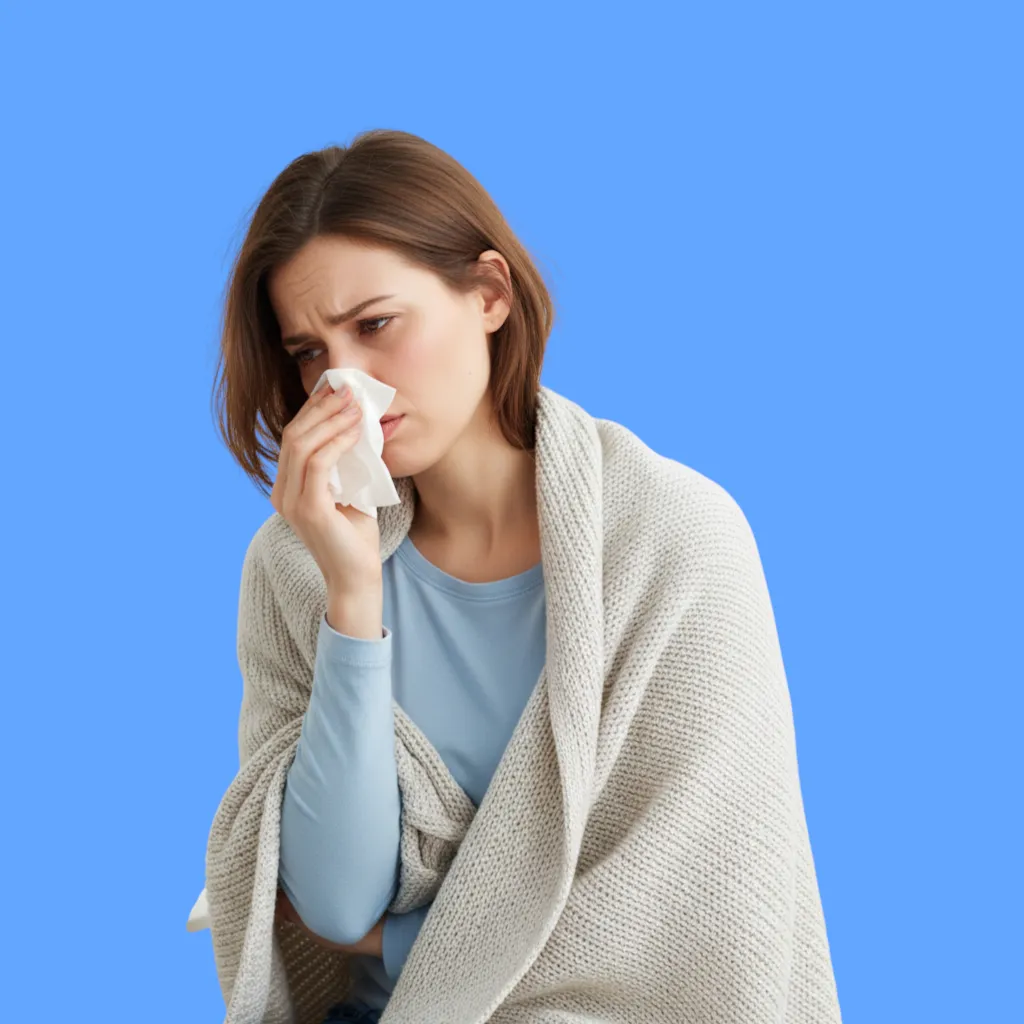What is cold and flu?
Cold and flu are among the most common illnesses, especially during winter, and they affect the upper respiratory tract.
Although they share many symptoms like coughing and sneezing, flu is usually more severe and appears suddenly, while cold develops gradually and tends to be milder.
Both are caused by viral infections, but the viruses responsible differ, which affects the severity of the illness and the speed of recovery.
What are the causes of cold and flu?
There are several common causes of cold and flu, including:
- Viral infections such as rhinovirus for colds, and influenza viruses A and B for flu
- Inhaling droplets from a sneeze or cough of an infected person
- Touching contaminated surfaces and then touching the face, mouth, or nose
- Being in crowded or closed spaces
- Weak immune system due to fatigue or poor nutrition
- Direct contact like kissing or handshaking with an infected person
What are the common symptoms of cold and flu?

There are several symptoms that patients may experience, including:
Cold symptoms:
- Nasal congestion or runny nose
- Frequent sneezing
- Mild sore throat
- Mild headache or fatigue
- Light cough
- Watery eyes sometimes
Flu symptoms:
- Sudden high fever
- Chills and heavy sweating
- Strong headache
- Muscle and joint pain
- Dry cough
- Severe fatigue that affects daily activity
- Loss of appetite and dizziness
When should you see a doctor?
It is advised to see a doctor immediately if any of the following occur:
- Fever lasting more than 3 days
- Difficulty breathing or chest pain
- Severe dizziness or loss of consciousness
- Skin rash or facial swelling
- Symptoms worsening despite home treatment
- New unusual symptoms like vomiting or severe diarrhea
- If the patient is a young child, elderly, or has chronic illnesses
How is cold and flu diagnosed?
Diagnosis is done using several methods, including:
- Clinical examination by a doctor to assess symptoms
- Nasal or throat swab test to identify the virus
- Blood tests in some cases to assess immunity or rule out other diseases
- Chest X-ray if pneumonia is suspected
How is cold and flu treated?
There are several ways to treat the illness, including:
- Complete rest and enough sleep
- Drinking warm fluids and plenty of water
- Using fever reducers like paracetamol
- Taking mild painkillers to relieve body aches
- Steam inhalation to reduce nasal congestion
- Gargling with warm salt water to ease sore throat
- Using saline nasal sprays
- In severe flu cases, antiviral medications like oseltamivir under medical supervision
Can cold and flu be cured?
Yes, cold and flu can be cured in most cases without complications. Recovery depends on the strength of the immune system, adequate rest, and following treatment advice.
Cold symptoms usually disappear within a few days, while flu may last from a week to ten days, and sometimes longer in severe cases.
What are the prevention tips for cold and flu?
Here are some tips to prevent the illness:
- Wash hands regularly with soap and water
- Avoid touching the face before washing hands
- Stay away from infected individuals
- Ventilate closed spaces well
- Use tissues when coughing or sneezing
- Strengthen immunity by eating a healthy, balanced diet
- Get the annual flu vaccine
What are the possible complications of cold and flu?
Some complications may occur if treatment is neglected, such as:
- Sinusitis
- Middle ear infection
- Bronchitis
- Pneumonia
- Worsening of chronic conditions like asthma or diabetes
- Severe dehydration, especially in children
Frequently asked questions about cold and flu
Is flu more dangerous than cold?
Yes, flu is usually more severe and causes more complications.
Can someone get cold and flu at the same time?
Yes, but it is rare.
Do antibiotics treat flu?
No, because it is a viral infection, not bacterial.
Does the flu vaccine prevent infection completely?
No, but it reduces severity and complications.